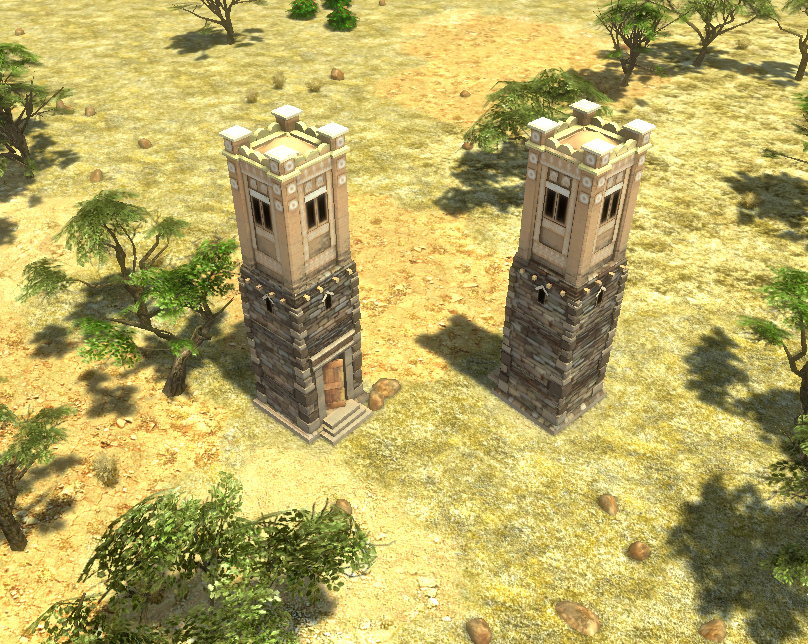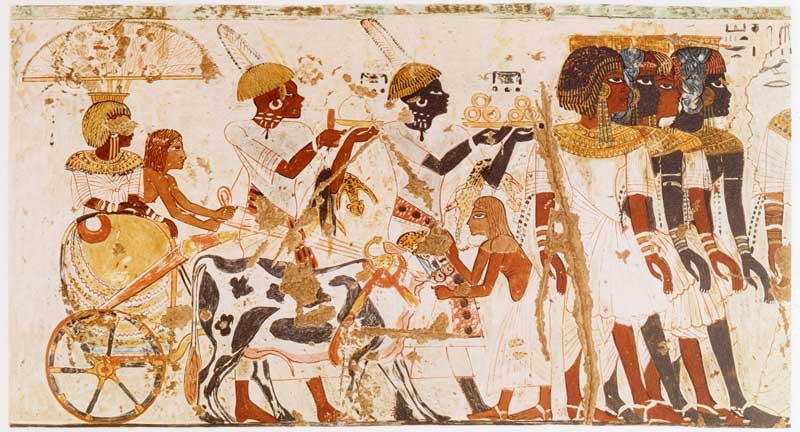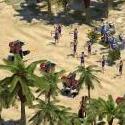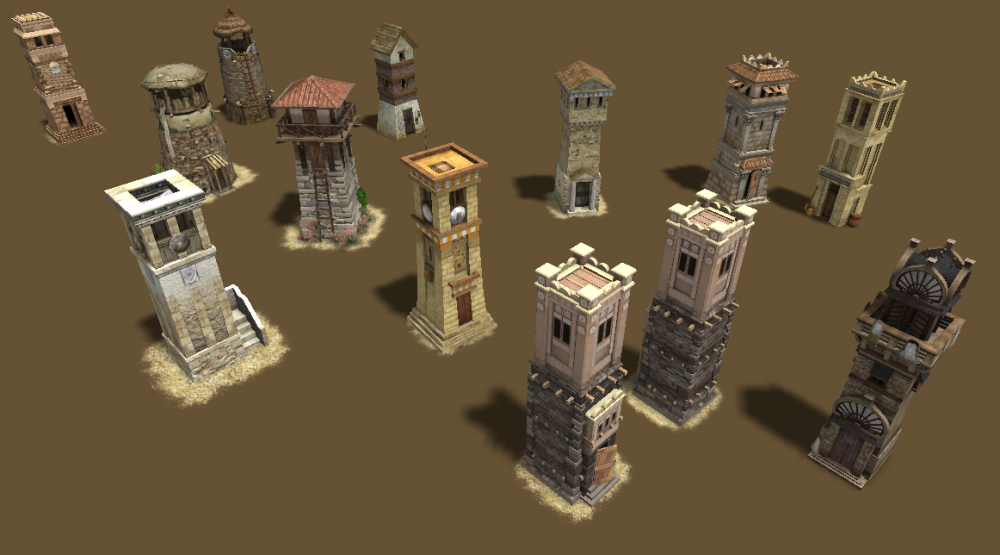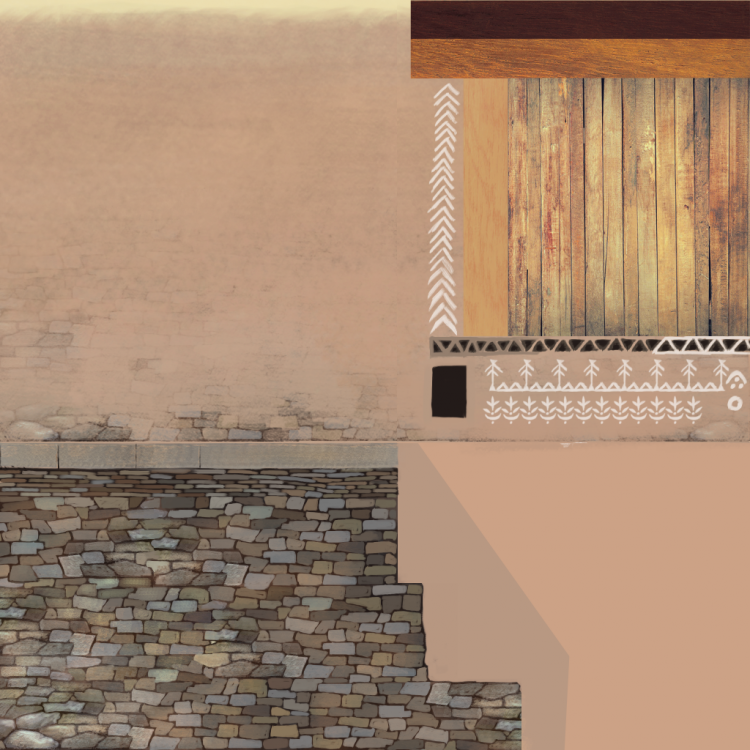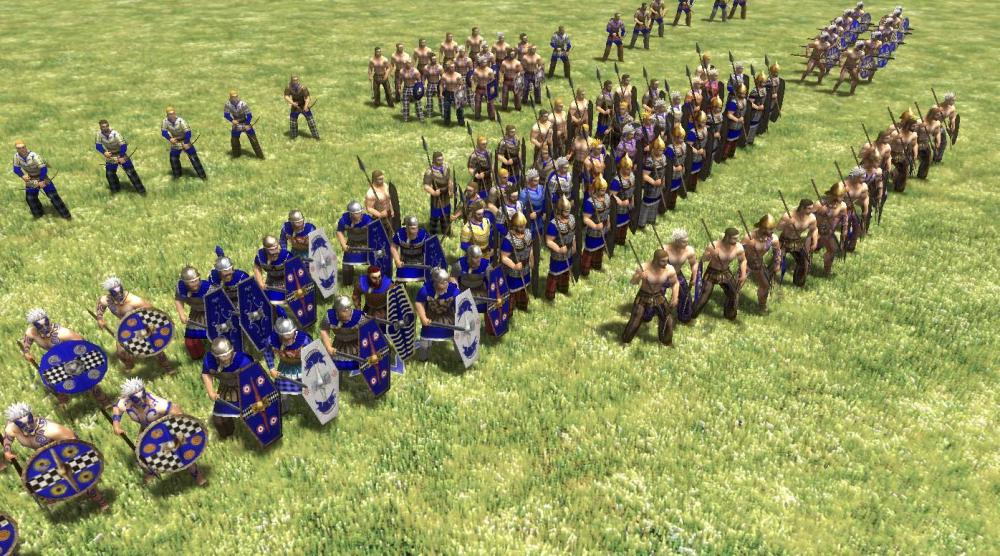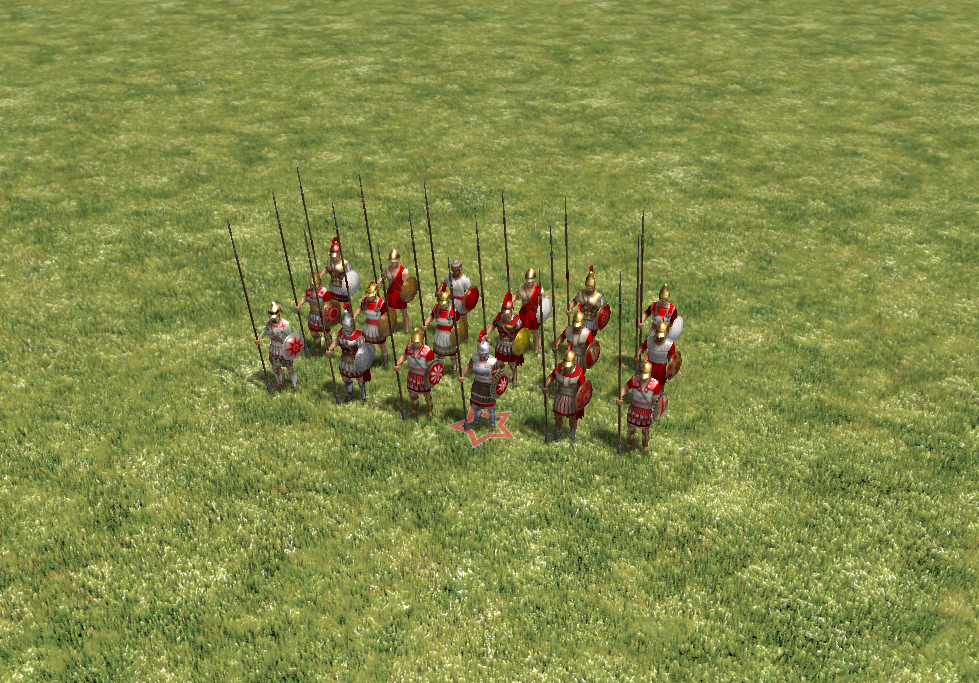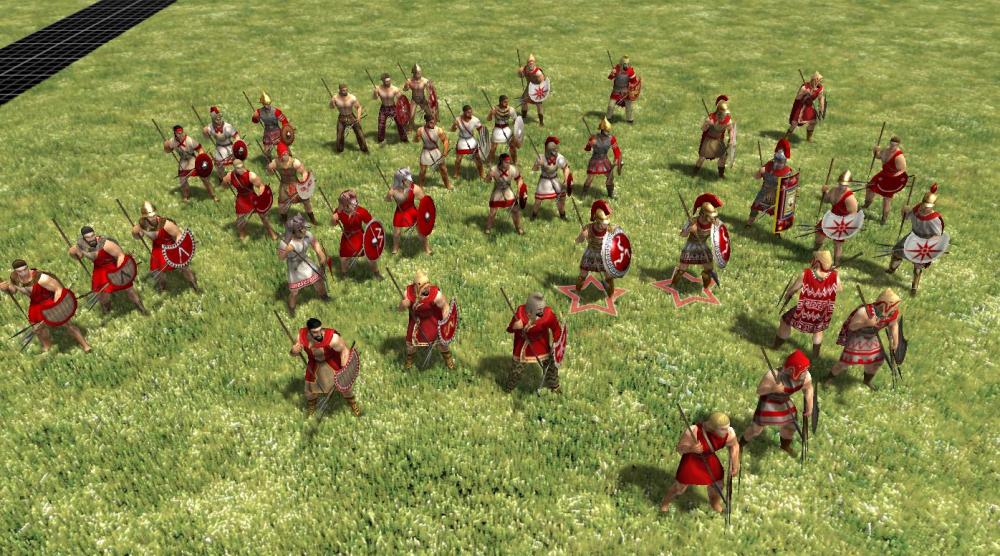Leaderboard
Popular Content
Showing content with the highest reputation on 2017-02-05 in all areas
-
2 points
-
Hey there! Sorry guys for the lack of activity (I just saw Omri's post), my Master's got quite intense and I dind't have a lot of time. Good news is I've some assets I've made during the first term that could fit in the game, so as soon I have a bit of time I will upload them.2 points
-
Jumping in on this post after a long time, sorry about that! I'm happy to help create musical sound design elements (like phase transitions etc). Is anyone in particular is managing this subject? I wouldn't like to impose of the sound design team so I'd rather communicate first2 points
-
Hello @tmm88! My sincere apologies for the huge delay, I've been in the process of moving and starting over my studio in Los Angeles, so it was a hectic year. I'm getting back to you now regarding your music - I have listened to it and it's well done, but you will need to find a way to create a more realistic simulation to be included in the game, as hearing a MIDI driven track will really distract from the game's sense of timelessness. It is particularly noticeable in the repeated patterns of the last submission, mostly in the high strings and winds. If you can create a well sampled version of the track, I will be happy to assist with some live instrument recordings. Feel free to reach out to me by email and keep me posted of your progress. Good luck to you my friend, O.2 points
-
yes, its helpful with having body characteristics for the textures, we're not touching the unit models2 points
-
Somewhere I read than there's no reference about Iberian ships... There you have one, and in the article, it says is the second ship found. It's a trade ship, for a 4-5 days trip. About April there would be starting an exposition, and maybe there would be some artistic reconstruction of the full ship. http://www.lavanguardia.com/local/girona/20170101/412998512665/arqueologos-reproducen-3d-barco-ibero-cap-de-creus.html2 points
-
Hahaha! Thanks… It's an open source game, so I don't even understand how some people think they can guilt people in to sacrificing their free time for something they could do themselves, if they're really so passionate about it. I don't believe in guilt-tripping people anyway… Especially not with history. A lot of very bad things happened to Africa, and Africans over the past few centuries, but I highly doubt that any one in the 0AD community is responsible for that. And there really is an underrepresentation of African history, to the point it gets dismissed. But as Africans, we ourselves need to be responsible for that representation, and not angrily demand others to do it for us. In the past few weeks, intensely scouring the net for reliable sources, I bumped in to so many weird topics you wouldn't even believe… Confronted with the archaeological record of Kush (and the cognitive dissonance that accompanies it), there are really groups of people obsessed with the idea that Nubians were actually white people . Considerable effort is put in to propagating the idea... On the other side of the spectrum, there are highly questionable Black Nationalist groups dedicated to spreading romanticized re-writes of history, that make any subsaharan civilizations seem superhuman. If you believe them, Taharqa conquered Spain… Oh, and the Greeks were actually black too… People are just too much sometimes... Anyway, I love the openness and genuine historical interest from the 0AD community. Not just in the Kushites, but the dedication to accurately representing so many civilizations, so often stereotyped (including even the Romans). For me, historical RTS are just as much about learning new things about history (even if it just makes me google a name I haven't heard before, or read a new civ proposal), as it is about playing the game for fun.. [By the way, I didn't check the license on the pictures of acacia and ebony wood in the spoiler. I just put them in as examples]2 points
-
Hi all, I'm 26 years old and I've been interested in programming since I was 10 or 11. In 2000/2001 our neighbour tried to teach me c++ but that didn't work. I struggled with Blitz Max when I was 15 and I couldn't write good programs. Things are different in 2017: I've taught myself how to build c++ applications in Linux and I know what tools to use and what tools to avoid. I use Code Blocks, whereas in the past I tried using Anjuta (garbage!) Emacs and Vi, none of which are acceptable for beginners. I also don't recommend automatic indenting, I find that these "aids" are counter-productive. It took many years of unnecessary stress and now I finally know what I'm talking about: I prefer c++ with Code Blocks and SDL2. I'd consider using Unity or Unreal in the future but for now I enjoy learning without too many assisted things. Getting comfortable I was sceptical for 15 years as to whether I could learn programming. There's too much conflicting information regarding how to do things, or what tools to use. Also, programming is unfairly stereotyped as being about "zeros and ones" and as a result many people think you need to be a hardcore autistic to gain any ground in programming, which is untrue. The main difficulty (besides the overwhelming possibilities of tools/languages) is simply that you cannot learn programming in high school. When I was in high school back in 2006, they only taught Microsoft Visual Basic and that was only in year 12, which is the 4th year of high school. If the government bureaucrats want students to learn properly, then they should teach programming in a wider sense. They should demonstrate the pros-and-cons of different editing tools, and c++ should be taught too - it isn't as hard as most people believe. 100 lines of code looks confusing to most people, if they're not familiar with programming. People don't understand that programming is structure: it is loops and function calls. A program can be broken down and understood as components, just like any other electrical system (SHOCK HORROR!) No-one becomes a genius programmer overnight. You have to start at the bottom, knowing your tools of choice and knowing what the scopes of your program are. Once a student understands that some parts of the program do not connect to other parts of the program, they can find problems much more easily. It becomes 1000x easier to understand. Every time someone talks of "learning to write code" they do damage to the reputation of programmers. There is no "code" there are statements. There is no "logic" or "system" there is program flow and loops. The sooner "normal" people become comfortable with programming the better things will be for everyone. Another point I'd like to emphasise is the GNU Philosophy Where did we come from to get to here I believe that it's important to know where we came from. While I dislike Bjarne Stroustrup's style of teaching there is something in one of his books that I really liked, he dedicated one chapter to the history of programming. I thought that was really cool. Back in the day it was all academic people. Then in the 80s the games industry was almost exclusively men with long hair who lived off pizza and metal. When money and status is the motivating force that drives someone into programming or network administration, that is the wrong motivation in my opinion. My motivation for learning programming is because it's interesting. I also want to share my skills and publish software for free (with no strings attached) so that we don't have to rely on closed-source tools and see ads everywhere. The world has reached such heights of gluttony that competing requires one to be as shallow and selfish as possible. It's refreshing to go against the norm. The invention of computers and silicone chips was a great scientific advance that is supposed to benefit everyone. We should continue the tradition of helping people do stuff whether it's being entertained or sorting data, and users should always be the most important thing. The rabid commercialisation of the games industry has been a disaster in my opinion. I'd like to avoid paying for games as often as possible - that's why I support 0 A.D. 0 A.D. I haven't managed to compile 0 A.D. yet, I need to try the nightly build next time or whatever it's called - the latest stuff from git/svn. I tried the package in the Fedora 25 repos with no luck, and I tried compiling the source but I never tried the latest build which I suspect is my problem. I don't have internet where I live so every time I want to download something or get support I have to get in my car and drive. I hope to go flatting in 2-3 months and perhaps get fibre via an ethernet cable for maximum speed. Plans for 2017 I begin a programming course on the 27th of February and that course ends in December, basically I get a piece of paper which says I'm smart and I learn c# and Xamarin (Xamarin is for making android applications). I want to contribute to free software projects in my spare time, I'll start with bug hunting. I also like the idea of promoting 0 A.D. on other forums, something which I've already done lots of. Do not underestimate the value of marketing (eg. good, short videos, walk-throughs and screen shots) I attached some photos just for fun.1 point
-
I've already run this into the ground, feel free to have a try, but I think you should take a look at this thread first1 point
-
After are done with the unit so units in this step are similar statue, don't have animation so you need add each action. and we have same body type with different clothes types... is long task. And mostly heavy for an artist. I'm not sure how many times take enrique finish with a set, we starting speak about this in 2014 and we aren't done yet. So why I'm asking if that is so important.1 point
-
Haha, yes, of course, I was just brainstorming some ideas for the long term. Mini-factions are a really interesting idea, and could add a lot in terms of depth. They offer a lot of opportunities: historically linking civilizations through mutual neighbors, an alternate source of mercenaries once conquered, an obstruction to expansion and a buffer between you and a more powerful AI. Before dealing with overly aggressive early rushes from the AI, or expanding territory, you'd have to first pacify "the locals". But yes, let's first finish the Kushites1 point
-
1 point
-
metadata.json contains the summary screen data at the end of the game. If it's absent, the "summary" button will be hidden in the replay menu, but the replay should still show up1 point
-
That actually became part of my long-term plan. Once I got the ability to "speak nonstop", I'll ask permission from the guys here if they want their replays featured for commentary, and then moveon from there. But my biggest hurdle at the moment is that I need a machine with specs that can handle over 400 path-finding units without significantly lagging (My computer feels the lag at that point even when I'm not using my recorder).1 point
-
I'd say why not with a solid design doc like the one you provided, with more graphical references if you can. Now I don't see why Hans wouldn't be able to fit by themselves ^^1 point
-
Map: mainland Players: borg- vs Liberty Summary: I got in trouble in this game, I almost lost. Liberty used rush skimisher cavs, and i fast p2. He came with many horses, and I had nothing to defend. This game was a lesson in patience and how to turn a game almost lost. borg- vs Liberty.rar1 point
-
1 point
-
Formations, along with citizen-soldiers, are going to be what really sets 0 A.D. apart from AoE2.1 point
-
Interesting discussion. I also think there is still room for fleshing out the game a little more (especially economically). There should be a little more focus on strategy vs tactics. There should always be more than 1 viable way of attaining dominance (diplomatic and economy, as opposed to only naked military aggression). I also like the idea of trees regenerating. But it might spoil the balance. For longer games though, I think it makes a lot of sense. @Servo You are not the only one who plays like that. I can spend hours (even days) on a single map, building "cities" and smaller towns, outposts, harbors…. All the while toying with the AI set to hardest. But the AI seems to sort of give up, in the very late game. I also think that the maps start looking terrible, when totally deforested, and I also often wall the last remaining forests (and build a temple inside, to represent a sacred grove of sorts). Forests were definitely a "managed" resource, and often weren't just cut at will. Forests were some of the most important resources in the ancient world, not just for wood, but also a source of food, medicine, shelter, and even a location for sacred rites and rituals. For example, Caesar cut down massive forests in Gaul, because he knew how important they were to the Gauls.. Deforestation was definitely an issue in the ancient world, but usually, whenever an area gets completely deforested, it leads to the weakening and even collapse of whichever civilization lived there.1 point
-
Easy, just add a new texture variant in the actors1 point
-
Well, kh-p-sh is their sickle swords, which a synonym for blacksmith's forge. m-r, or some variation of mar, is farm field from a scholarly book I found with Google. ḥwt-nṯr is from the Egyptian temple article on Wikipedia. The Egyptian word for outpost is the closest equivalent I can find for sentry tower. The Sanskrit (Mauryan) word for sentry tower was from the same Sanskrit website I have used in the past for Mauryan specific names. The Latin (Roman) and Greek words for sentry tower are from a scholarly book I also found with Google. To round out the missing specific names, Attuna is the Phoenician word for furnace or chimney, the root word for Mount Etna, which is the best choice I have found for blacksmith for the Carthaginans.1 point
-
1 point
-
@Servo You are right about historical connectivity (in a military context) being important. That is one of the reasons I preferred to advocate for the Kushites, as opposed to other factions (like Axum). (@stanislas69) As for the Chinese, I have an interesting proposal to link them to the greater game. The addition of a mini-civ, called the Yuezhi, would resolve the entire issue. The Yuezhi were an oddly European looking, nomadic steppe people, who first lived in Western China (Tarim basin). They're also known as Tocharians. Their material culture was apparently identical to that of the Xiongnu (a predecessor to the Mongols). After a devastating war with the Xiongnu, they migrated West in enormous numbers, laying waste to the Greco-Bactrian kingdoms and eventually establishing the Kushan Empire by the early 1st century AD. Around Northern India and Bactria. All this occurred during 0AD's timeframe. The addition of this minifaction would connect the Chinese to the Mauryans and Hellenistic world in the Middle East. It's the beginning of the silk road! @balduin Thank you for your work on the github repository! (https://github.com/Jeeppler/kushites_mod/blob/master/docs/build/specification.pdf) It's looking very promising already! About skin-color: Another interesting topic. Essarhadon of Assyria captured some of Taharqa's family, and described them as followed: “His wives, his sons and [his] daughters [who]se bodies like his, have skins as black as asphalt” Kush was a multi-ethnic state formed out of many tribes and kingdoms. The Meroities, the ruling class, were definitely very dark (black) in complexion. Other groups, like North Nubians and Beja were slightly lighter skinned, but still darker than the average (North) Egyptian (similar to South Egyptians though). More southern Sudanese are also very dark. The name "Sudan", means black, in Arabic, referring to its people (bilād as-sūdān, the land of the Blacks). The name Ethiopia also comes from the Greek "Αἰθιοπία" (Aethiopia), which means something along the line of "burnt face". Fig. 103 The two extremes of the ancient Sudanese phenotype (pre-Arabic). Left are modern Nubians (North Sudan and South Egypt). Notice the naturally flat hair, relatively common (but not ubiquitous) in dark skinned populations of East Africa. On the right is a modern South Sudanese man, with typically black skin (some of the darkest people in all of Africa actually). Their ancestors lived as far north as Southern Egypt in Neolithic times. They looked very similar to the Meroites. Beja also have a mix of kinky and flat hair, sometimes wearing half dreadlocks, half afro's. I don't know if this is possible, or if the game even merits it, but representing the Kushites with two skin-tones would be most accurate. A "lighter", reddish brown for Nubians and Beja, and a very dark complexion for Meroites and Nuba mercenaries. This would also reflect the way Egyptians represented them: Fig. 104 Kushites paying tribute to the pharaoh, from the tomb of the viceroy of Kush, Huy. The two skin-tones clearly represented. This image also gives a good idea of what (aristocratic) women looked like in Kush. As well as chariot design.1 point
-
1 point
-
Haha you got me there. I only developed that habit when shifting from one resource to another since I thought, "At least I'm not technically wasting the resource when I'm building!" ... until I noticed that I've been sending people to war while still carrying metal or stone. I'm not there yet, but I do plan to train myself on that pure store-resources-first habit.1 point
-
I have found a few of the missing specific names. For the Ptolemies, blacksmith is kh-p-sh, farm field is m-r, temple is ḥwt-nṯr, and sentry tower can probably be the same as outpost. For the Mauryans, sentry tower is Tārāṅgaṇa. For the Romans, sentry tower is Catascopium. For the Hellenes, sentry tower is Karavokyrós.1 point
-
1 point
-
I like the AI to become the hardest gradually into the hardest. i like the game feature that you can switch from one speed to another. I used slow movement to micro and it could be considered cheating but I enjoy doing it. I hope the AI can behave in an organized manner during march and attack. The AIs with ranged siege units should possess an organized sieging ability and should not over react to some minor harassment by pulling out all his siege army to contain the harassment. I think it would be beautiful too when they march towards their targets in a nice formations. AI should stop chasing units if they lost line of sight. Could they behave like microwing their wounded units and produce healers too?!1 point
-
Oh we do use photo textures, we just end up changing them so much it can be hard to see. Wood is one of the tougher things to paint, so those textures are much appreciated I think I like this civilization pitch as much as I do because you're not trying to guilt us into adding it. And of course pitched it well. It's exciting!1 point
-
1 point
-
Hello there, long time following, first time posting. I’d like to start of by thanking everybody involved in the development of this marvelous game, for doing such an amazing job. The game has been an absolute a joy to play, is loads of fun, and is a more than worthy successor to AOE. In fact I’d go so far as to say it’s way better, and has great potential for becoming even better. Secondly, I’d like to apologize for what might be a rather lengthy post, full of stuff you’ve probably read a million times before, so please bear with me. The reason I might repeat some stuff already brought up in various other topics and discussions, is simply to give some more weight to certain already existing ideas. Also, I’m not a coder or programmer, and could never do what you guys have pulled off. I’ve been playing this game for many years now (almost exclusively single player) and have seen it transform from the buggy, earlier alpha’s when building walls was still a mere fantasy, to the beautiful gem it is today. And I know many years before I even heard of this game, many people were dedicated, and have worked tirelessly to bringing this dream alive. Again, I applaud you all! I just wanted to leave my impressions, ideas and suggestions about this game, as a first time poster. I understand that many things in this game are the way they are for a reason, and I might not always know this reason, so please forgive my noobishness. I do not wish to step on any ones toes, so feel free to disregard any point I raise. I understand they might not all be realistic or feasible, neither do I expect any of them to be implemented. Just my personal thoughts and ideas. So, here I go: 1) AI : I love the AI, for mainly 1 reason. It poses a genuine challenge, which always keeps things interesting. Having said that, I know it’s still a work in progress, and has many glitches. I feel that the AI needs certain basic protocols, that seem logical for a human, which are overlooked. For example, when the AI attacks (early in the game) with a large force, but gets defeated, it will quickly send another, usually inferior force as a second wave, and so on. I think the AI should always hold off an attack, until it’s numbers are stronger than the previous failed attack. This would help with the perception that the AI is just overly aggressive without any reason or logic. Also, it tends to keep attacking the same positions over and over again, which makes placing fortifications a no-brainer. If it gets defeated at the same location for more than 3 times, it should really automatically start thinking about attacking form another (less fortified) angle. I would also love to see it build new “towns” in conquered territories, so it isn’t so vulnerable when attacked at it’s “capital”, as well as build walls to protect its “investments”. It would be really nice to see the AI build a planned and highly concentrated, walled area. Also, gatherers in general, whether AI, or your own, should never forage in enemy territory, unless explicitly ordered to do so. Neither should troops belonging to the AI nor yourself, decide (on their own accord) to attack enemy units when those enemy units are in their own territory, by default. I hate those accidental skirmishes that end up being Armageddon type battles for survival. 2) Scale: I love everything on a large scale, as I am sure many of you do to. I regularly play with a population of over 2000 in late game (although lag becomes unbearable at that point), and I am genuinely impressed with the ability of the game to handle so many units. But as technology evolves, processors become more powerful, bugs are fixed and the mechanics of the game are streamlined, I would love to see even more, even grander things. Bigger, more realistic maps, able to support populations of thousands on either side, with ease… No fixed population caps anymore. I know… I’m a dreamer… 3) Citizen soldiers : I know it’s a controversial subject, so I’m sorry to bring it up. I believe, as many others that this original feature is actually historically inaccurate, and compromises the potential for amazing gameplay. Having a larger civilian population from which you recruit military units would be much more realistic, and interesting. You can retain the citizen soldiers, but they should never exceed the “civilian population” (which includes slaves and serfs), which have historically always been (significantly) larger in every civilization featured in 0AD. 4) Economy & Population: I believe economy is the least developed aspect of the game, and I feel that it could be made a lot more immersive, and realistic, without necessarily becoming needlessly complicated. Try to think of an arcade version of the old classics like Pharaoh, or Ceasar, The Settlers III & IV, but also more contemporary games like banished or the Anno series. 0AD fundamentally differs form these games in that it is a base-builder, and not a city builder. But I think it can be a lot more than “just” a base builder. Perhaps a town builder. Imagine reserving micromanagement of units specifically for military units. Instead of micro managing hundreds of individual, static units, imagine managing a working population, automatically going about their assigned jobs, governed by an AI. Workplaces that need laborers, markets that need produce to sell, raw materials that need to be transported to the “industries” that need them. A population that needs “services”, like taverns and pubs, cultural venues like theatres, temples and shrines to different gods, courthouses etc... A population that naturally expands through immigration and new births (as long as new, or upgraded housing is provided). How about a coin based system, in which wood, food, metal and stone are only some of the many goods produced, and required for building, upgrading and recruiting. Things like leather, linen, wool, milk, coal, clay (for making bricks and pottery), fabrics, jewelry, a variety of agricultural products, fish, tools etc… And all these goods would have a coin value. I also think having fixed, non-depletable resource points would be an extremely interesting thing from a strategic point of view. It would give you, the player, and the AI a really good reason to fight. Resources such as metal (which I’d rather see split in gold and Iron ore), should be mined from set locations, in some rocky hills, or alluvial mine fields. Farming should only be done on fertile lands (as opposed to the middle of the desert (which is possible now). Hunting on hunting grounds, where game automatically replenishes (through new births). Stone from a stone quarry. Logs from forests that slowly grow back over time, fish from anywhere in the ocean. All these things don’t just deplete in real life, so why should they in the game? Rather than managing finite resources, you should manage the constant supply and demand of resources and goods. Why not introduce fixed trade routes, not unlike AOEIII, where foreign traders are spawned at the edge of the map, and travel to the other edge trading at available trading posts as they go. And all this economic activity should bring in direct revenue, (e.g. goldmine or export of specialized goods), or indirect revenue in the form of taxes (coin), which would in turn be used to maintain services, building projects, research and your military. 5) Maps : I love many of the maps in the game, and many have clearly been made with a lot of care and attention to detail. All I can say is that I prefer the most realistic looking maps, with real topographical features and diverse biotopes. Also, the bigger the better. I feel that on larger maps, attacking your enemies feels like a real campaign. Small maps feel unbearably unrealistic to me. Who builds their town right next to their enemies’ town?? Anyway, realism, naturalism and size are definitely the way to go for 0AD’s maps. 6) Buildings : I love diversity in a game, and I think 0AD could use (even) more diversity in building types and variations. With a more expanded and advanced economy come many new specialized buildings from which new technologies can be researched. Also more eye-candy, such as decorations, statues, parks and plazas are always welcome to jazz up your town. The ultimate goal should be to create a beautiful and realistic looking, functional town, bustling with life, on one hand, and conquering your enemies town(s) on the other hand. Adding animations to any building that has employees or is garrisoned, together with the hustle and bustle of raw materials and finished goods being whisked back and forth from storage yards to workplaces, would really bring the town alive. I think houses should be able to upgrade (just 3 levels in total) based on the services you’ve provided in your city. Higher level houses can then accommodate a higher population. Also, I think the building “barracks” should be split in to 3 distinct buildings: “Melee Infantry barracks”, “Ranged infantry barracks” and “Stables”. I think that would make more sense. Stables should always be necessary before recruiting cavalry. Some more buildings for variety and economic realism could include a siege workshop, Iron smelter, weapon smith, tool smith, leatherworks, weavers, storage yard, granary, slaughterhouse, herbalist, huntinglodge, fresh-water well, a variety of differentiated farms, claypit, brickmaker, potter, jeweler, work-camp, logging-camp, sawmill, charcoal maker, and of course, every city/town needs a proper palace, as well as a central (ceremonial) square. But mainly a palace… 7) Military : I won’t say much about this subject, because I know it is still a work in progress. All that I will say is that the Total War series, by far, have some of the most realistic battle mechanics of any game. It would be really awesome to see a simplified (arcade) version of those mechanics implemented in this game. 8) Random stuff : Why is the wonder for the Celts Stonehenge? Don’t get me wrong, I think it is one of the prettiest wonders in the game, but lacks historical accuracy. Stonehenge was originally erected more than 2 millennia prior to the arrival of Celtic culture in Great Britain. I know that no more civilizations will be added to the current game, but I’d still like to argue for the official inclusion of the Chinese, as well as the kingdom of Kush, whose capital was ancient Meroe (the Nubians). The Chinese traded extensively (though indirectly) with the Mediterranean world, as well as with Mauryan India, the Middle Eastern states and East Africa, including Kush, establishing official diplomatic relations with many of them. The Kingdom of Kush also traded directly with Ptolemaic Egypt, the Middle Eastern states, India and later with Rome itself, being one of the largest centers of steel production in the ancient world. The Kushites also actively waged wars against Ptolemaic Egypt, Rome and Persia, directly anchoring it in the same geopolitical sphere of influence. They built (modestly sized) pyramids, large Egyptian style temple complexes, complex urban centers, employed war elephants (sometimes imported from India), developed distinct writing systems and many more exciting things. Often overlooked in other games, the Kushites would really add some beautiful diversity to an already beautiful game. I believe the Ptolemaic faction should have more Hellenistic characteristics, and its current ancient Egyptian look, would suit the Kushites better, who copied many ancient Egyptian elements in their culture. If you managed to read through all that, congratulations. I thank you for your patience and interest. I’d like to reiterate that I know that many of my suggestions may not be feasible. I just wanted to share my personal dreams for 0 A.D. What I think would make this game one of the greatest in history J1 point
-
1 point
-
I have similar thoughts about the pace of the game. I'd love a game mode where maintaining my own civilisation is more the focus than destroying my enemies. Here are my thoughts, building upon your ideas. Regeneration & Seasons - I've changed my mind about the growth rate for trees, it should probably be the same as fish, growth accelerating in proportion to the current quantity. Individual animals could have a random chance of spawning babies, which would mature with time (luckily, nature runs on a pretty strict clock, so breeding and maturing could be done with global counters, like the seasons). Animals would also have to die of old age (I guess this would just be a random chance during the "death" season). Here's how I see it happening (while trying to keep things as simple as possible): at the start of spring, randomly selected mature animals give birth, at the midpoint of winter a random selection of animals die, young and mature alike (midwinter will become an obviously sensible time for deaths if seasonal weather is implemented). Any newborns that make it through to spring will mature, but maturation is done after births, so these newly mature animals wont have a chance to breed until the following year. The seasons could also effect the regeneration rates of fish and trees: summer being a time of accelerated growth, and winter being the opposite. The spring could also be a time when trees with max wood spawn saplings nearby. This would be a random number of saplings at random positions near the parent tree. The position would be completely random and if there is no free space at that position then the sapling simply fails to take root. This would usually be a "bug" but for this purpose it actually works nicely because it creates a natural rate of expansion for forests, and means you'd want to keep your forests relatively far from built up areas. (Fruit bushes could operate the same way.) Harvest Controls - With these regeneration effects in place, we need to stop our workers from completely depleting organic resources but still be able to order them to be cleared to make space for building. (I went through at least half a dozen ideas trying to think of something sensible for this!) When you assign a worker to harvest wood from a tree, with at least 1/2 its maximum, the worker will gather wood until the tree is down to 1/4, they will then automatically leave it to regrow. Workers will never automatically harvest trees with less than 1/2 capacity. If you assign a worker to harvest a tree that is below 1/2 this will command the worker to clear the tree entirely (which could have a special cursor icon to indicate this to the player). (I toyed with the idea of setting your own percentages to harvest, or even have settings for each worker, but that all seems too complicated.) Potentially, (code gods willing) if you wanted to clear a tree with over 1/2 wood, you could click to harvest and then shift-click to harvest the same tree again, exploiting the already-implemented task queue to automatically give the order to clear the tree once it is down to 1/4 remaining wood (and the worker has stopped harvesting it). (The same rules would apply to all other organic resources.) Growth: Area Effects - I had some ideas about area effects but I'm not sure how taxing they would be on the engine. Trees could boost nearby growth of fellow trees, farms and animals, while all buildings—except the farmstead—reduce the growth rate. This would encourage lining farms with rows of trees, like real farmers do, and planting forests away from developed areas. I don't like this idea any more. Mines & Quarries - We need to make these resources last to keep up with the organics. My suggestion is that each mine/quarry has several layers of resources. To access these additional layers you must research new technologies. The layers could be quite varied in size, so you might, for example, have a mine that at first is very productive but then in the mid-game yields almost nothing, but in the late game yields a huge volume. This would make it important to keep scouting around as the game progresses; new resources could seem to pop out of nowhere because their initial layers were very small or non-existent. Idle Chatter - At the moment, idle workers do literally nothing. My suggestion is to make idlers wander about a bit at their own will and form groups with other idlers and talk to each other (with some little animation). This has the advantage of getting them out of the way of workers, stops them blocking access to buildings, and groups them together so it's much easier to put them all to work. Also, this allows for more sinister mechanics like in my next point. Dissenters & Rebels - If we're going to be focusing on maintaining our own civilisation then let's make things interesting! Randomly (or based on something I haven't thought of yet ) some of your workers may become dissenters; this means they may randomly stop working and go idle from time to time. Dissenters can spread their dissent but only to other idle workers—so keep your workers busy! If enough dissenters group together they will revolt against you and become rebels, their faction will change to "[Your Civilisation] Rebels" and they will either attack you or flee to set up their own base. Rebel factions can do everything a normal faction can, with time you could even become allies with them. There is only one way to quash dissent: you need to execute the dissenters, but executions will give any surviving dissenters an easier time converting idle workers to their cause. Here is the part where you become very paranoid about whether your idle workers are guilty only of finishing their tasks or if they are causing unrest in your city! Maybe you need to keep a closer eye on things and see who is abandoning their tasks. Names - I love games that generate random names for each unit. It really helps to create your own story through the course of a game—and would greatly help in identifying those pesky dissenters. We could have culturally relevant names for citizens and soldiers, and even have special names for our ships. It would add a nice touch of flavour.1 point
-
Hi, thank you all for reading my post and taking the time to reply. I forgot to mention what I liked most about this game. And that’s the open source nature of this project. The fact that anyone from anywhere can add contributions, and share their thoughts or ideas, and that they will be heard. You are really a lovely community to follow. @Stanislas69: My specs are actually quite laughable. I have a standard 2011 macbook pro Processor 2,3 GHz Intel Core i5 Memory 4 GB 1333 MHz DDR3 Graphics Intel HD Graphics 3000 384 MB Software Mac OS X Lion 10.7.5 (11G63) To be honest, lag becomes noticeable when more than 200 units start moving at the same time, and becomes unpleasant to play when there’s about 500 moving units. I just like to have several “standing armies” of 200 men in different locations around the map, and like to test how many units I can recruit before I’m “forced” to quit. But with a population cap of 300, the game runs surprisingly smooth. Well, even in Gaul, the majority of the population were peasants, “commoners” and slaves who never actually saw military action. Celtic society was ruled by a Celtic elite, kings, nobles and princes, who each ruled their own tribe and oppidum. These tribes could form kingdoms and powerful states. What the exact relation between these Celtic elites and their subjects was, is still a matter of great debate, but it does seem that combat was generally reserved for some kind of elevated class of warriors, derived from the nobility. Even among the Gauls, the majority of the population were non-combatants. Also, in their (proto-) urban centers, like Bibracte or Heuneburg, Celts actually built concentrated rectangular housing, with wooden shingle roofing, as opposed to thatched roofing. Thank you for the advice on mods. ROTE looks beautiful! I really hope it gets officially included. Great work! Kushites differ from Ptolemies in that they have a much stronger Sub Saharan influence, along with preserving ancient Egyptian culture, styles of building and aesthetics. Ptolemies were really a Hellenistic faction, set in Egypt. That doesn’t make them Egyptian. Alexandria, the capital was a major center of Greek culture, not Egyptian. The housing was predominantly Greek style, as in the other two main centers of Ptolemaic culture, “Neucratis” and “Ptolemais Hermiou”. I think the Ancient Egyptian look should be reserved for the Kushites (with some added Sub-Saharan elements), and the Ptolemies should look much more Greek, with some Egyptian influence (mainly the temple). I’ll think about making a design document, but I’ve seen topics on Nubians before, so I’ll check that out first. @Lion.Kanzen: I think “cash crop plantations” is an absolutely fantastic idea. An alternate source of metal for the late game. Should really spice things up. @Libervurto: I don’t think your advice was patronizing at all. Thank you for some useful insights. I know I’m a bit of a megalomaniac. I always want to see things grander and grander! True, that infinite resources would (considerably) lengthen the game. But that’s just one of it’s charms. I think 0AD has much more to offer than 15min skirmishes. The unnecessary, obsessive rush to crush your enemies makes that you can’t really take your time to enjoy the details of the game. It can make for a stressful experience if you just want to get a nice town up and running, before having to fight for dear life, less than 10 min in to it. But maybe a midway option is more attractive. In terms of the forrest growing back: for every 2 trees that are cut, 1 tree grows back. Then wood doesn't deplete so fast, but still depletes eventually. Or perhaps, cut trees can be replanted by a forester, to which you must assign (a max number of) units. I think fishing should have a steady (yet lower) income, than farming. This would prevent harbors and their fishing-boats from becoming useless once the fish are depleted. I think having considerable metal and stone deposits in central (neutral) areas of the maps, could create realistic, natural, battle hotspots. Areas of the map you need to colonize and defend in order to develop and grow. This nurtures strategic thinking. This is opposed to the quick, tactical exploitation and exhaustion of scarce metal and stone deposits, which makes expanding and defending territory a useless exercise once these deposits have been exhausted. I’m talking about the motivation to fight. Especially when all the resources have been depleted, what are you still fighting for? What is the AI fighting for? I understand this only applies in late-game, but that's when I really have my fun. @Finchj: I stand corrected. Of course natural resources can deplete over time. I guess I meant to comment on the unusually fast rate at which especially mines, and fish stocks are depleted in this game. Some mines have been mined for thousands of years. They don’t usually deplete in a single generation, and they have always been sources of conflict, which is interesting for this game. It gives you something to fight over. I think fishing should be more akin to farming, where you have a slow but steady income of food, for every fishing spot, fished by a set maximum amount of fishing boats (maybe max 2 boats per fishing spot). This would provide you with another reason to achieve naval dominance. Anyway, thank you for your educated response. I didn’t know Macedon benefited from Greek environmental crisis. Interesting… @wowgetoffyourcellphone and @Finchj : I think your ideas are good! Simple version could be “cash crop plantation” or industry for each civ: Athenians, Spartans, Macedonians: Olive Grove Carthage: Olive grove (or perhaps “international trade embassy”) Romans, Ptolemies: Vinyard Gaul: Hemp plantation Iberians: Horse breeder Persians: Cotton plantation Mauryans: Cinnamon plantation Seleucids: Date palm plantation Chinese: Silk production center These would provide you with a modest metal income in the late game, when traders become your only other viable option for metal. They are also less vulnerable than traders, which is why traders should still be more profitable. Also, maybe limit their number to max 5 per player, so you can't just spam them. I also like Finchj’s second set of ideas.1 point
-
You can try it in Delenda Est. I also made the wheat wave in the winds.1 point
-
Ok so I was maybe out... How about 59 minutes? Yeah, which is I said a Gaia mechanic. Gaia automatically grows trees after long periods of time. Okay let me be honest and tell you why I had this idea... Think of AOE days... I love keep the match going on forever. I'm just like that... I love to maintain a game and keep it from ending. But in AOE you get those times where look at the deforestation, and land been stripped of everything that was on it, and you think... Man... Its a shame. How nice if you could see the trees grow back and animals respawn... (Specially the fish for the love of christ) but you always feel "darn" that sadness that there's nothing more but barren land. Kills the game... Imagine a game that lives like nature....... Think about it1 point



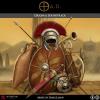

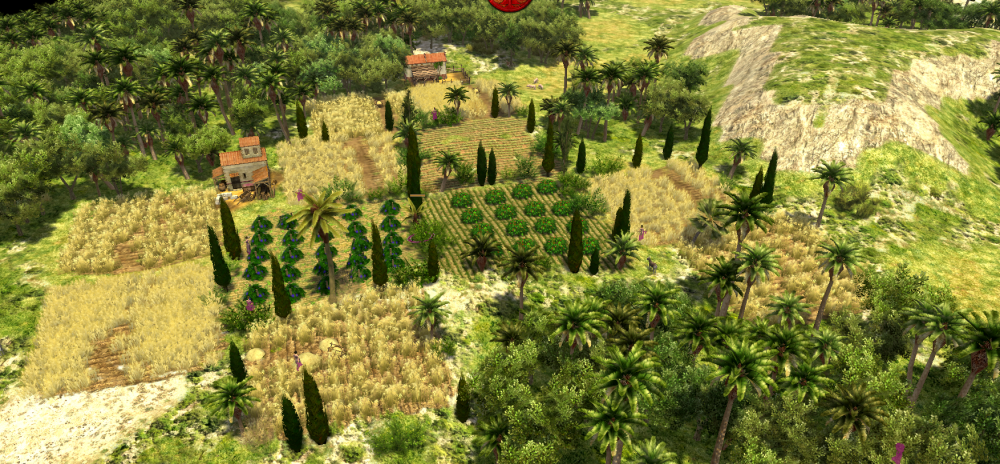
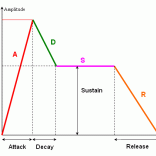

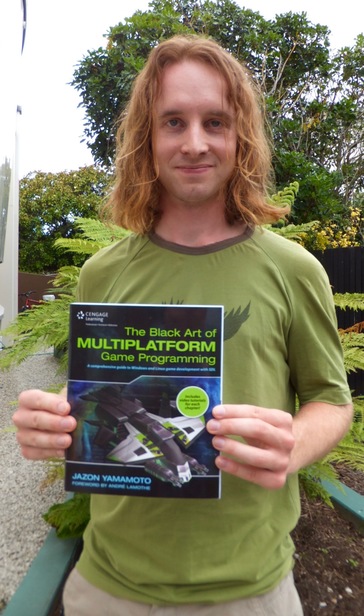

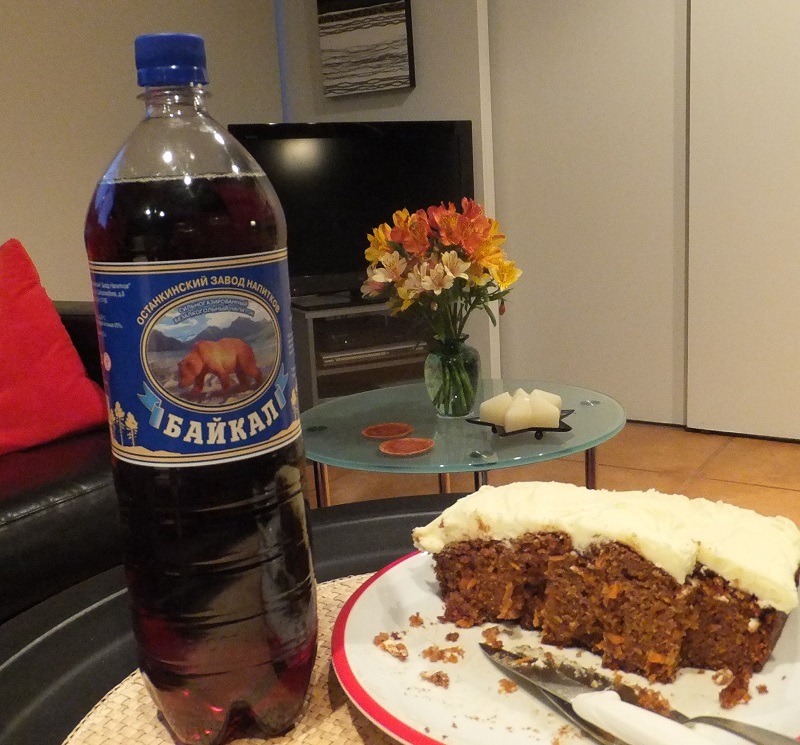


.thumb.png.ce58cea22940c255f5b0a735d5abee36.png)

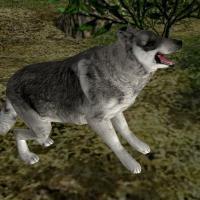

(1).thumb.gif.b5909d3df98a8ec15dc452423f219bc5.gif)

